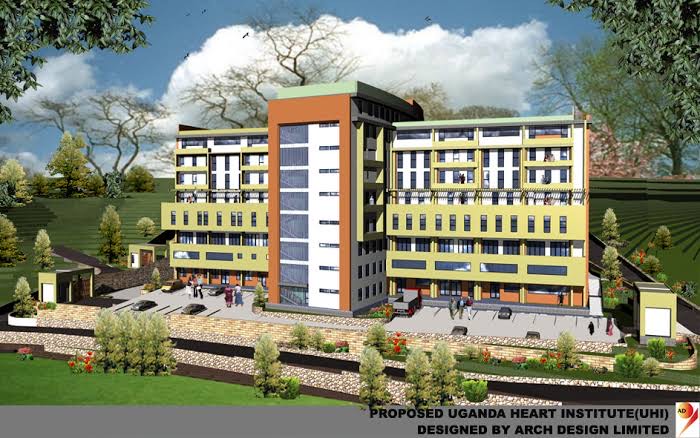Uganda is poised to reshape its healthcare landscape with the launch of the construction of a $70 million hospital under the guidance of the Uganda Heart Institute (UHI).
Designed to expand access to advanced cardiovascular care and curb costly referrals abroad, the new facility promises to reduce chronic overcrowding and resource shortages at the Institute’s current site in Mulago National Specialized Hospital.
At the groundbreaking ceremony in Naguru, Kampala, Dr. James Magala, Chairman of the UHI Board, painted a stark picture of the challenges confronting cardiac care in Uganda.
“The Institute has long operated under constraints at Mulago National Specialised Hospital, hampering our ability to meet the growing patient demand,” he said. “The escalating burden of cardiovascular disease compels us to establish a modern facility that can truly serve our people.”
Globally, cardiovascular diseases remain the leading cause of death, claiming an estimated 17.9 million lives each year according to the World Health Organization’s fact sheet on cardiovascular diseases. In Uganda, the burden is equally significant; national surveys such as the Uganda STEPS Survey indicate that roughly one in four adults live with hypertension, a key risk factor for heart disease. Furthermore, with approximately 1.6 million babies born annually in Uganda, global epidemiological estimates suggest that about one per cent of these infants suffer from congenital heart disease—translating to roughly 16,000 affected babies—with nearly half of these cases requiring urgent intervention as observed in studies from low-resource settings. In addition, Uganda continues to battle rheumatic heart disease, the leading preventable acquired heart condition among children and young adults, with estimates indicating that around 300,000 schoolchildren are affected nationwide; this figure aligns with prevalence rates reported in school-based screening studies from East Africa.
Egypt-based Arab Contractors Osman Ahmed Osman & Co. has won the contract for a project that could reshape Uganda’s role in cardiac care, medical training, and research. The hospital, set to rise more than 10 floors, will house 250 beds, including 40 in intensive care, along with three operating theatres and two catheterization labs. More than just adding another medical facility to the landscape, this project is designed to push the boundaries of cardiac treatment and train the next wave of specialists who will shape the field for years to come.
Dr. Magala stressed that the new hospital will not only expand capacity but also ensure that life-saving cardiac treatment becomes more accessible and affordable.
“We are determined to stem the tide of patients seeking treatment abroad—a trend that drains both our resources and our foreign exchange,” he said. The facility is expected to boost local expertise and reduce the financial burden on patients who have traditionally had to travel overseas for advanced care.
The project is being financed by a consortium that includes the Arab Bank for Economic Development in Africa (BADEA), the OPEC Fund, and the Saudi Fund for Development (SFD). According to Dr. John Omagino, Executive Director of UHI, the funding package consists of $70 million in loans and grants, supplemented by an additional $3 million and 10 acres of land set aside for the hospital’s construction.
“These resources are critical for the full realization of this transformative project,” Dr. Omagino declared.
Prime Minister Rt. Hon. Robinah Nabbanja, speaking on behalf of President Museveni, issued a firm directive at the ceremony. “Delays are not acceptable,” she asserted. “The Ugandan people deserve a fully operational Heart Institute by 2027. This project is a priority, and we must deliver on our commitment.” Nabbanja’s remarks underscored the urgency of completing the hospital within a two-year timeframe, amid a climate where lifestyle changes, dietary shifts, and genetic predispositions are driving an upsurge in conditions such as hypertension, heart failure, stroke, and coronary artery disease.
Health Minister Hon. Ruth Aceng echoed this call for accountability, emphasizing that the new hospital must meet international standards and serve as a benchmark for excellence in the region. “Today’s ceremony marks the beginning of a new chapter in cardiovascular care,” she said. “We expect nothing less than quality and efficiency from all stakeholders involved in this critical project.” She added.
The new hospital is set to be constructed on 10 acres of land and organized into three distinct blocks—clinical, administrative, and support—will serve as both a treatment centre and a hub for research and training. By enhancing early diagnosis and preventative measures, the facility aims to reduce the frequency of medical referrals abroad and to promote medical tourism, thereby positioning Uganda as a beacon of advanced cardiac care in Africa.


